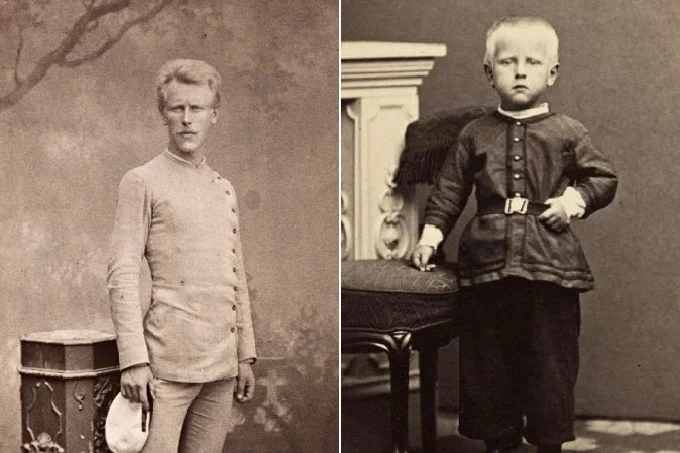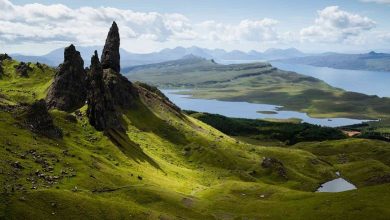How explorer Nansen conquer the largest island on the planet after 8 unsuccessful attempts

Many travelers and navigators have repeatedly tried to cross mysterious Greenland. From 1752 to 1886, 8 attempts were made to conquer the largest island on Earth, but they all failed. Having passed several kilometers deep into the expedition, they returned as one.
In 1888, the twenty-seven-year-old Norwegian polar explorer Fridtjof Nansen managed what seemed impossible: the team under his command successfully crossed the island of Greenland. Even in modern conditions, this is an impossible task for scientists, and in 1888 it was completely impossible. But the seething young blood, the thirst for knowledge and the cherished dream to embody the unrealizable – to be the first to set foot on the ground, where no human foot had set foot before, inscribed Nansen on the pages of world history.
Fridtjof Wedel Nansen – conqueror of glaciers and permafrost
Fridtjof Wedel-Jarlsberg Nansen was born on October 10, 1861, near Oslo in the family of a local lawyer. He owes his aristocratic origin to his mother, Adelaide Nansen, born Baroness Wedel-Jalberg. It was from her, and not from his father, that Fridtjof adopted his decisive and energetic character. Adelaide was known as an intelligent and courageous woman. Contrary to her background, she did not accept the conventions of her class. The freedom-loving woman was fond of sports, in particular, skiing, which respectable neighbors considered inappropriate for a woman of her circle. But it was she who instilled in her son a love for snowy mountains.

Even in his youth, Fridtjof excelled in skiing. Several times he even won the championships of Norway. After graduating from high school, he had to make a difficult and serious choice between painting and science. In the end, the future scientist decided to enter the university at the Faculty of Zoology.
How a 21-year-old enthusiast conceived of crossing the Greenland ice sheet
As a sophomore, Nansen first took part in swimming in the Arctic Ocean. He collected data on marine mammals and observed ice and weather conditions on the Viking hunting vessel. The Viking expedition lasted from March to July 1882. A quarter of this period, the ship drifted along the east coast of Greenland. Nansen thoroughly described his first experience in his collected works Among Seals and Polar Bears (1924). It so shocked the young enthusiast that plans were born in his head to conquer the North Pole.
While working at the Bergen Museum, Fridtjof did not leave this idea – to visit Greenland. His plans were extremely ambitious, but at the same time, ridiculous. Cross on skis an island covered with a thick ice sheet?! Suicide! That is what he was told by Dr. Grieg, to whom Nansen had informed of his intentions, and by the leading polar explorer of the time, Nordenskiöld. Despite the sidelong glances, Nansen decided to go to Stockholm and apply to the government through the Academy of Sciences with a request to allocate 5,000 crowns for the expedition.
Nansen became a sensation in the press, which also reacted ironically to his plans. The authorities shared the views of the public and refused to finance the Nansen project. Support came unexpectedly, but by the way: an entrepreneur from Denmark, Augustin Hamel, provided Nansen with the necessary 5,000 crowns.
An important role in the preparations for the expedition was played by the Danish doctor G. Rink, who specializes in Greenland. He, like everyone else, considered Fridtjof Nansen’s plan absurd, but the burning eyes of the young man made it clear that he would succeed.
What difficulties did Nansen face on the expedition?
The expedition started on May 2, 1888. First, the crew crossed by regular steamer to Scotland. On May 9, on the Danish steamer Tula, they headed towards Iceland, where on May 20, they landed in Isafjord. From here, on the industrial ship Jason, the team headed for the east coast of Greenland.

On July 17, 1888, the ship arrived at its destination, the settlement of Angmassalik on the shores of the Sermilik fjord. “Jason” had to overcome a narrow twenty-kilometer strip of drifting ice floes. Nansen and his crew planned to cross the floating ice in two boats. As expected, the boats could not maneuver for long, so from time to time they were dragged onto the ice floe and lowered back into the water from the other side.
One of the boats was damaged, and while it was being repaired, the ice closed. It was impossible to go ashore: the ice floes were too small to drag boats over them. On July 19, the ice melted, and this allowed Nansen and his team to continue the campaign. The crew of the expedition had to drift on ice floes at a very high speed.
In the end, after ten days of fighting the elements, the team saw the shore, and then open water appeared. Soon the expedition reached the rocky coast of Greenland, however, much further south than planned. Along the way, they came across Eskimo villages, which greeted the ice explorers good-naturedly.
On August 10, the expedition reached the Umbrikfjord, located about 200 km to the north. After several days of rest, on August 15, 1888, Nansen’s legendary passage through Greenland began. Basically, the promotion was carried out with the help of skis. From the archives of the expedition, it is clear in what inhuman conditions the team had to survive. The air temperature could drop to -45 C.
On October 3, the expedition, having covered 470 km, finally reached the west coast. On October 6, the team sailed to narrow rocky inlets on the west coast, only to find that they had missed the ship for Norway.
The team members spent the whole winter in Gotthob, a West Greenland town that was part of the Kingdom of Denmark. All this time, Nansen lived with the Eskimos, where he studied the customs of the northern people, their language, and mastered labor crafts. On April 15, 1889, Nansen and his team set off on the Vidbjorn steamer to Copenhagen to meet with their patron. May 30, 1889, returned to their homeland in triumph.
What were the results of the expedition?
The public perceived Nansen’s Greenland expedition, first of all, as sporting achievement. However, the Nansen project was of great importance for the development of physical geography. Thanks to him, for the first time, the nature of the distribution of glaciers on the eastern and western coasts of Greenland was revealed. Nordenskiöld’s assumption about the presence of oases in the interior of the island was rejected. Nansen concluded that the glaciers of Greenland should be regarded as an accurate model of the Quaternary glaciers influencing atmospheric processes in the Northern Hemisphere.
Nansen made a stunning statement: the Greenland glacier is shaped like a convex shield, expanding to the north. The highest point recorded by the Nansen team is located in the southern part of the island. As you move north, the glacier becomes less high and flatter. Mathematically, the irreproachable shape of Greenland is determined primarily by atmospheric processes. Thus, a constant current periodically causes the destruction of the glacier with the formation of icebergs. It was one of these that caused the terrible disaster of 1912 – the death of the Titanic.
Nansen made an important discovery that Greenland’s surface is not covered with ice at all, but with snow. Moreover, the snow does not melt and does not decrease even in the hot summer months. In 1893, Alexander Ivanovich Voeikov published a work in which he called the Nansen expedition one of the most impressive journeys of the 19th century.
Now few people know the name of Fridtjof Nansen. Streets are called this surname, monuments are erected in his honor, but this is too little compared to what he did to all mankind. Nansen is an example of how unshakable faith in yourself allows you to move mountains. And it is thanks to his truly heroic deed that modern scientists know how life is in the coldest place of the North Pole: frosts of -70 and long-livers who have exceeded 100 years.




